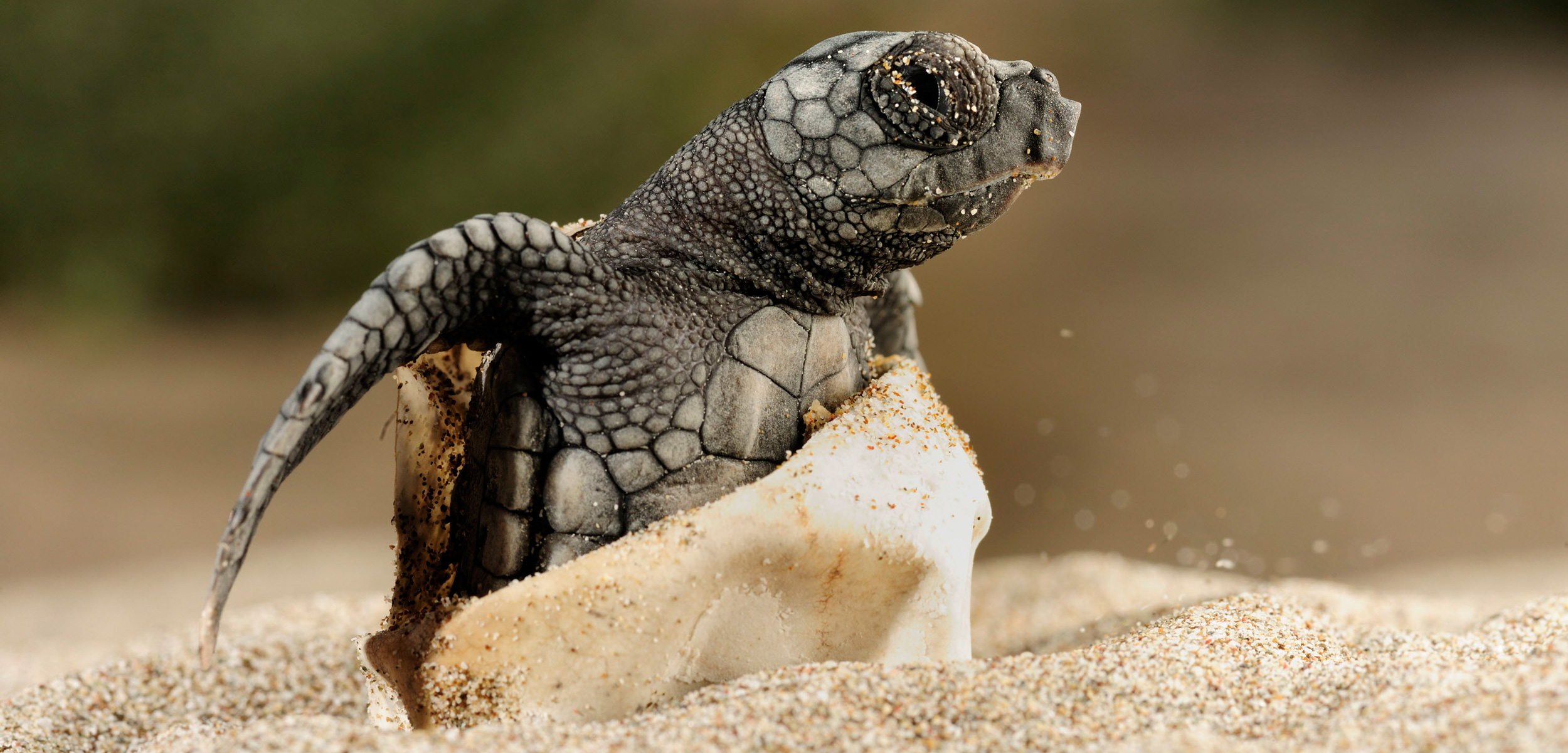It’s Gettin’ Hot in Here, So Water All Your Eggs
Rising temperatures are altering the sex ratio of sea turtles. Researchers are exploring one possible fix.
Article body copy
In 2015, Alexandra Lolavar spent the summer on the beach sowing and tending a garden of sea turtle eggs. Then a graduate student studying biology at Florida Atlantic University, Lolavar wanted to see if she could influence the number of male babies that were born using nothing but sand, water, and sheer determination. She found that she could—but her tinkering came with a cost.
Lolavar wasn’t trying to play God; rather, she was manipulating a phenomenon known as temperature-dependent sex determination (TSD). This quirk in biology, common in alligators, crocodiles, and turtles, causes the sex of a developing baby to depend on the temperature of its environment. If the temperature rises above a certain threshold, then more sea turtles are born female than male. As the planet warms, this is a process to be wary of.
More females being born can benefit turtle populations in the short term, since the number of females determines how many eggs can be laid in the next generation. But if TSD continues to favor females, Lolavar says there’s concern that eventually there simply won’t be enough males to sustain a population.
So, from April to September in 2015, 2016, and 2017, Lolavar relocated loggerhead egg clutches that had been rescued by a local nature center to a private section of beach in Boca Raton, Florida. She executed this step as gingerly as possible. If she rotated, inverted, or jostled the eggs, the developing embryos inside could die.
After padding a bucket with sand, she placed a clutch of eggs inside, cushioned them with more sand, then carried them to the study site. “It makes for a really heavy bucket,” she says.
Above the high-tide line, she set up two test sites: one with nests that were watered daily with a sprinkler to cool them down, and one with nests that only received water when it rained. In 2015, the watered nests received four centimeters of water each morning; in 2016, eight centimeters of water; and in 2017, 14 centimeters of water.
Lolavar found that only the highest dose of water affected the nests’ sex ratios. But that came with a significant trade-off: these nests also produced fewer successful hatchlings.
“Sea turtle eggs are not like chicken eggs,” says Lolavar. Their shells are soft and highly permeable, which makes the embryo inside especially vulnerable. Just like plants, sea turtle eggs can be overwatered. “It’s a tricky balance.”
Mariana Fuentes, a marine conservation biologist at Florida State University who was not involved in the study, says both the skewed sex ratio of sea turtle hatchlings and reduced egg survival rate due to climate change will threaten the future of sea turtles. She’s not sure if watering nests is the most feasible solution to these problems.
Lolavar also has some reservations about just what it would take, in terms of water and effort, to manipulate sea turtles’ sex ratios. She says she doused the nests each morning with the same amount of water that Tropical Storm Eta dumped over its two peak days.
While watering turtle nests can temporarily cool eggs off, Lolavar says it’s not the long-term, large-scale solution that’s needed to prevent a female-skewed turtle population. It’s not the safest solution either. But it is the one at hand.
“What’s better: to have a bunch of eggs that hatch, or only a few hatchlings but more males?” says Lolavar. “I don’t know the answer to that.”

